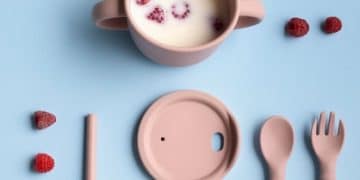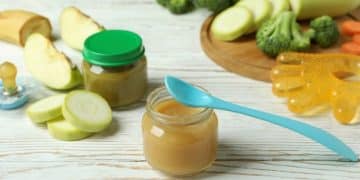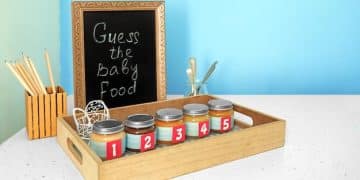The Environmental Impact of Baby Food Packaging: Sustainable Feeding Choices for 2025
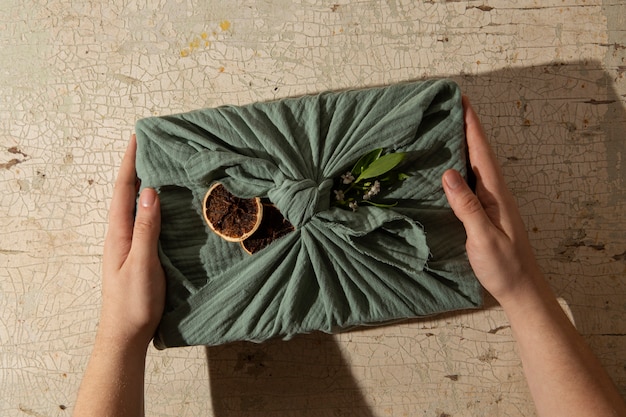
The environmental impact of baby food packaging is a growing concern, driving the need for sustainable feeding choices in 2025, including eco-friendly materials, reduced packaging, and innovative solutions to minimize waste and promote a healthier planet for future generations.
The journey of parenthood is filled with choices, and one increasingly important consideration is the environmental impact of baby food packaging: Sustainable feeding choices for 2025. As we look to the future, it’s crucial to understand how these packaging choices affect our planet and what sustainable options are available.
Understanding the Environmental Footprint of Baby Food Packaging
Baby food packaging, while convenient, contributes significantly to environmental pollution. From production to disposal, each stage has its drawbacks. Understanding this footprint is the first step towards making informed and eco-conscious decisions.
Types of Baby Food Packaging and Their Impacts
Different materials used in baby food packaging have varying environmental impacts. Let’s explore the common types and their effects:
- Plastic Pouches: Convenient but often non-recyclable, contributing to plastic waste.
- Glass Jars: Recyclable but heavy, leading to higher transportation emissions.
- Metal Cans: Infinitely recyclable but require significant energy for production.
The Lifecycle Analysis of Packaging Materials
A lifecycle assessment examines the entire environmental impact of a product from raw material extraction to disposal. For baby food packaging, this includes:
- Resource Extraction: Mining for metals, extracting oil for plastics, and harvesting materials for paper-based packaging.
- Manufacturing: Energy used to convert raw materials into packaging, often releasing greenhouse gases.
- Transportation: Fuel consumption for shipping packaging materials and the final product to stores.

Ultimately, understanding the environmental footprint of these materials helps in selecting more sustainable options.
The Rise of Sustainable Baby Food Packaging
With growing awareness of environmental issues, there’s been a significant shift towards sustainable baby food packaging. Innovations in materials and design aim to reduce waste and minimize environmental impact.
Innovative Materials for Eco-Friendly Packaging
Several eco-friendly materials are emerging as alternatives to traditional packaging:
- Plant-Based Plastics: Made from renewable resources like corn starch or sugarcane, these plastics are biodegradable and compostable.
- Recycled Content: Packaging made from recycled plastic, glass, or paper reduces the need for virgin materials.
- Compostable Packaging: Designed to break down in compost environments, reducing landfill waste.
Packaging Reduction Strategies
Reducing the amount of packaging used is another key sustainability strategy. This includes:
- Minimalist Design: Using less material to package the same amount of food.
- Concentrated Formulas: Requiring less packaging per serving.
- Bulk Options: Allowing consumers to purchase larger quantities, reducing per-serving packaging.
These sustainable packaging options aim to minimize environmental impact and promote a healthier planet.
Navigating Sustainable Feeding Choices in 2025
Choosing sustainable baby food packaging can be overwhelming. Parents need practical advice to navigate the options and make informed decisions that align with their values.
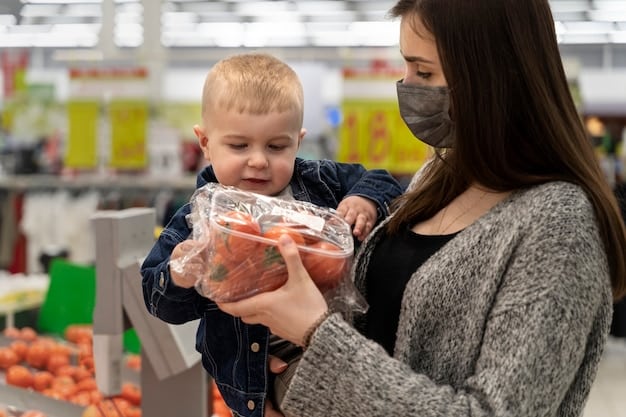
Understanding Eco-Labels and Certifications
Eco-labels and certifications provide valuable information about the sustainability of packaging:
- Recycled Content Labels: Indicates the percentage of recycled material used.
- Compostable Certifications: Ensures the packaging meets standards for composting.
Practical Tips for Eco-Conscious Parents
Beyond certifications, here are actionable tips for parents:
- Choose Reusable Pouches: Fill them with homemade or store-bought baby food.
- Buy in Bulk: Opt for larger containers to reduce per-serving packaging.
Being informed and proactive can make a significant difference in reducing your family’s environmental footprint.
The Role of Policy and Industry in Promoting Sustainable Packaging
While individual choices are important, systemic change requires action from policymakers and industry leaders. Government regulations and industry initiatives can drive the adoption of sustainable packaging practices.
Government Regulations and Incentives
Governments can play a crucial role by:
- Banning Single-Use Plastics: Encouraging the use of sustainable alternatives.
- Taxing Non-Recyclable Packaging: Discouraging the use of environmentally harmful materials.
Industry Initiatives and Innovations
The baby food industry is increasingly investing in sustainable packaging solutions:
- Investing in R&D: Developing new bio-based and compostable materials.
- Partnering with Recycling Programs: Ensuring packaging is properly recycled.
Such initiatives can create a more sustainable industry that supports both the environment and consumers’ needs.
The Economics of Sustainable Baby Food Packaging
The cost of sustainable baby food packaging is often a concern for parents. Examining the long-term economic benefits of eco-friendly options can reveal that they are not only good for the planet but also cost-effective in the long run.
Comparing Costs: Traditional vs. Sustainable Packaging
Initially, sustainable packaging may seem more expensive. However, consider:
- Reduced Waste Disposal Costs: Compostable packaging can lower landfill fees.
- Potential for Resale: Reusable packaging has an inherent value.
Long-Term Economic Benefits
The long-term advantages of investing in sustainable packaging include:
- Reduced Healthcare Costs: A cleaner environment leads to healthier children and fewer health-related expenses.
- Enhanced Brand Reputation: Companies known for sustainability attract loyal customers.
These economic benefits make sustainable baby food packaging a wise investment.
Future Trends in Baby Food Packaging
Looking ahead to 2025, several trends are shaping the future of baby food packaging. These innovations promise to make feeding infants more sustainable and convenient.
Smart Packaging Technologies
Smart packaging integrates technology to enhance food safety and reduce waste:
- Sensors: Indicate if food has been exposed to unsafe temperatures.
- QR Codes: Provide information on proper disposal and recycling.
Closed-Loop Systems
Closed-loop systems aim to eliminate waste by:
- Collecting Used Packaging: Recycling it into new products.
- Partnering with Farmers: Composting food waste to enrich soil.
These trends reflect a move towards a more circular and sustainable economy.
| Key Point | Brief Description |
|---|---|
| 🌱 Eco-Friendly Materials | Plant-based plastics and recycled content reduce environmental impact. |
| ♻️ Packaging Reduction | Minimalist designs and bulk options decrease overall waste. |
| 🏷️ Eco-Labels | Certifications help identify sustainable packaging choices. |
| 🔄 Closed-Loop Systems | Systems that collect and recycle packaging to minimize waste. |
Frequently Asked Questions (FAQ)
▼
Single-use plastic pouches are among the most harmful due to their difficulty in recycling and prolonged environmental degradation. They often end up in landfills, contributing to pollution.
▼
Look for eco-labels and certifications, such as “Recycled Content” or “Compostable” labels. These indicate adherence to specific environmental standards and sustainability.
▼
Yes, reusable pouches are an excellent alternative. They reduce waste by allowing parents to fill them with homemade or store-bought food, minimizing single-use packaging.
▼
Government policies can incentivize sustainable practices by banning single-use plastics, taxing non-recyclable materials, and offering subsidies for eco-friendly packaging alternatives.
▼
Industry innovation is crucial. Investing in research and development of bio-based, compostable materials and partnering with recycling programs ensures packaging is properly managed, reducing environmental harm.
Conclusion
Choosing sustainable baby food packaging is more than a trend; it’s a responsible decision for our planet’s future. By understanding the environmental impact, looking for eco-labels, supporting industry and policy changes, and adopting simple eco-conscious habits, parents can make a significant difference in creating a healthier world for their children. It’s about feeding our little ones and nurturing the environment they will inherit.
